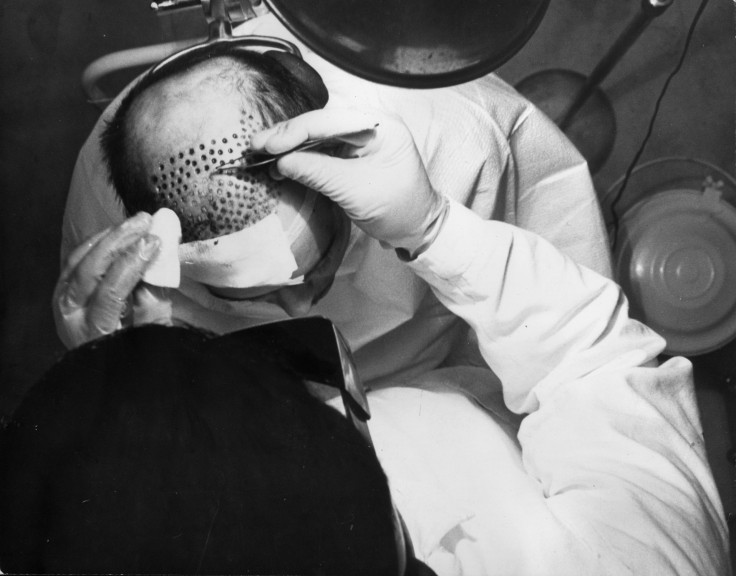Why Alopecia Affects Men More Than Women

Even though most people take hair loss as a part of growing older, it is interesting to note women do not suffer from a medical condition that results in sudden hair loss — alopecia — as much as men. While hair thinning is commonly seen in men and women, who are aging, acute baldness is mostly limited to the former.
Alopecia is a medical condition where one’s immune system gets confused and starts attacking the hair follicles that are tasked with creating new hair, as per the health news website WebMD. This causes a person’s existing hair to fall. At the same time, it prevents new hair from sprouting as the follicles get destroyed.
While many people might be familiar with the concept of excessive hairfall and baldness, they are often unaware about the different kinds of Alopecia. Some of the most common types of Alopecia, according to a non profit helping the patients suffering from the medical condition in the United Kingdom, Alopecia UK, are:
Alopecia Areata: It is a condition when uneven hair loss takes place, resulting in patchy baldness instead of a single bald spot.
Alopecia Totalis: This is a more advanced form of Alopecia, resulting in total loss of hair from the scalp.
Alopecia Universalis: This is the most advanced form of Alopecia and leads to loss of hair not only from one’s scalp but also the entire body.
Androgenetic Alopecia: This is the most common type of baldness in both men and women and is often known as “pattern baldness.” There is a steady thinning of hair to the point where one eventually goes bald. This form of Alopecia is typically linked to heredity.
This condition should not be confused with hair shedding or telogen effluvium, which can temporarily take place during periods of excessive stress but is followed by hair regain after a while, something that does not happen in the case of Androgenetic Alopecia.
According to another health news website, Medical Daily, 70 percent men and 40 percent women experience Androgenetic Alopecia in their lifetime. It is often found a person who suffers from this medical condition has one or more members of their immediate or extended families suffering from permanent baldness. This is because this is a genetically inherited condition.
According to the National Institutes of Health, there is a scientific explanation behind men suffering from Androgenetic Alopecia more frequently than women. Variations are found in the AR gene that increases the activity of androgen receptors in the hair follicles. These hyper active receptors then interact with androgens like dihydrotestosterone (DHT), which is a byproduct of testosterone.
The DHT then becomes responsible for causing hair follicles to shrink, making it next to impossible for the scalp to retain healthy hair. And since men produce more DHT in their bodies than women, more cases of Androgenetic Alopecia is seen in the former.
Also, women have the advantage when it comes to the average age at which the hair loss starts. According to American Hair Loss Association, men’s hair starts falling out as soon as they hit puberty and only gets worse with age. By the age of 35, approximately two-thirds of men experience some degree of hair loss and 85 percent of them either go completely bald or experience excessive hair thinning and receding hairlines by the age of 50.

Read: L'Oreal Causes Hair Loss? US Class Action Lawsuit Says Product Uses Toxic Substances
In a survey conducted by the National Library of Medicine, in which 1,536 men between the age groups of 18 and 45 years participated, 47 percent of the people admitted to experiencing hair loss. Also, 70 percent of the people accepted they considered their hair to be a vital part of their self-image and 62 percent said baldness affected their self-esteem.
Some of the other sentiments attached to the fear of losing hair were: losing attractive appearance, horror of becoming bald, the realization of aging, concerns about social life getting hampered, and ultimately — depression.
Men also tend to get more hair transplants than women. Dr. Edmond Griffin, a hair replacement surgeon from Atlanta, Georgia and the co-founder of the Griffin Center wrote in a blog that when he first started in his profession in the 70s, about 2 percent of his hair transplant patients were female, a number that has increased by five times today.
Nevertheless, the number still falls short of the tirade of male patients. This is mainly because men and women approach hair transplant with very different motives. “Men with pattern baldness are usually optimal candidates for hair restoration surgery because they have an adequate donor region for harvesting follicular grafts. Women’s expectations are generally much higher than men’s. Men approach hair transplant surgery wanting more hair, while women usually want a return to full thickness,” Dr. Griffin wrote on the blog.
© Copyright IBTimes 2024. All rights reserved.












